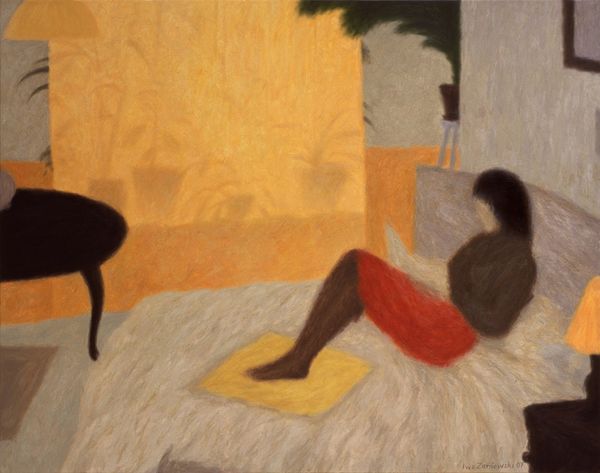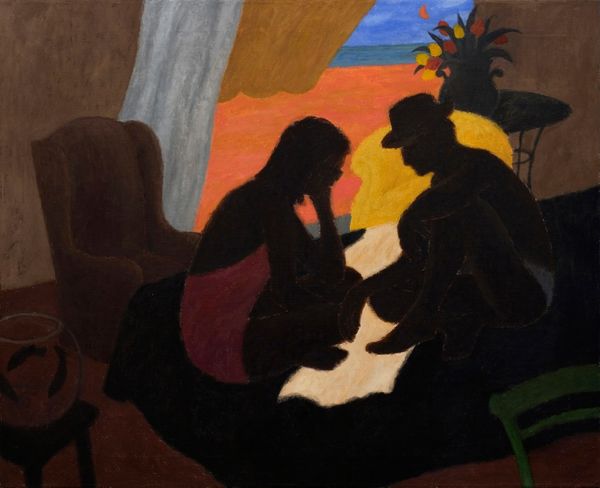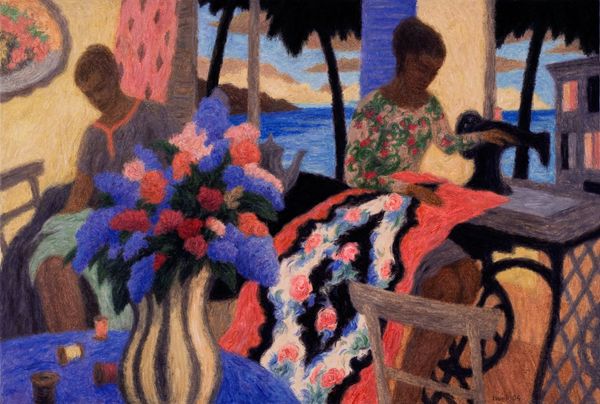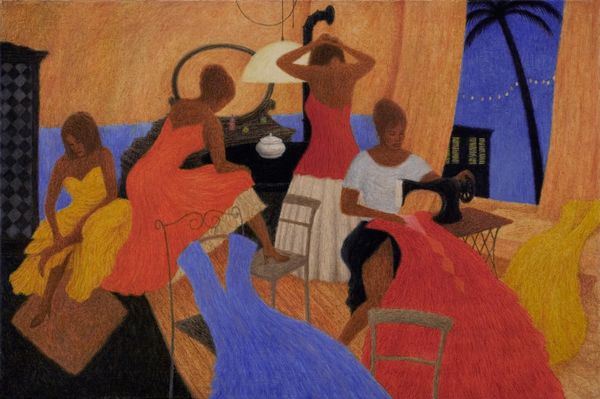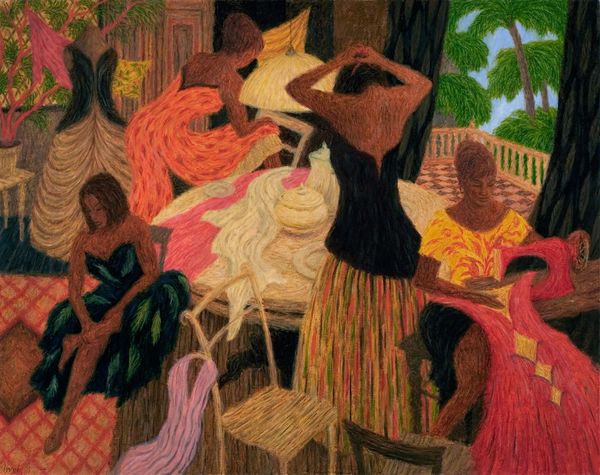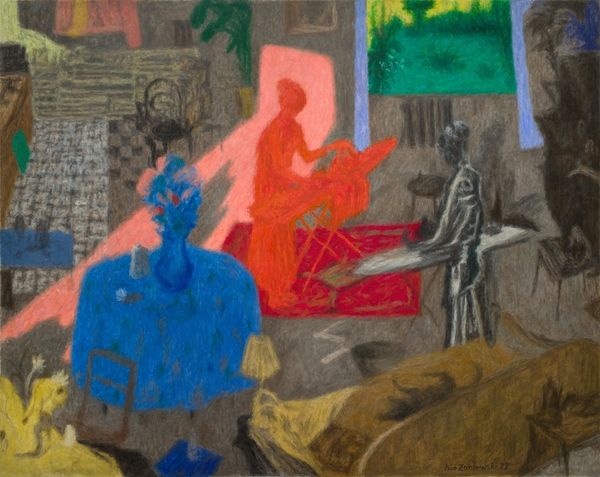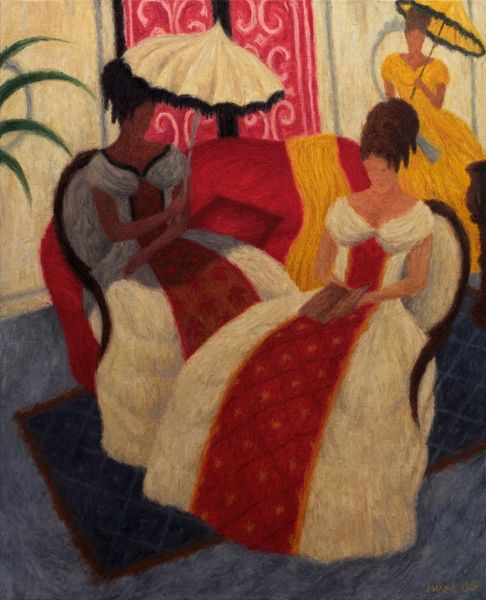
oil-paint, impasto
#
portrait
#
figurative
#
oil-paint
#
figuration
#
oil painting
#
impasto
#
acrylic on canvas
#
genre-painting
#
watercolor
Copyright: Modern Artists: Artvee
Editor: Here we have "Ladies at Sunset," an oil painting by Iwo Zaniewski. The impasto is so thick; you can practically feel the texture of the dresses. What stands out to you about Zaniewski’s method? Curator: Considering this piece materially, observe the labor embedded within the layering of the impasto technique. What is the social context that allows such laborious work to be created and consumed? Note the scale; it's not monumental, suggesting a domestic, perhaps bourgeois, market. How might the materials themselves—the pigments, the canvas—reflect trade routes and colonial histories? Editor: That's fascinating; I hadn't considered the canvas itself as holding history! Do you think the setting adds another layer to the social context? The palm tree visible through the window seems very deliberate. Curator: Exactly. Consider the labor involved in producing such luxury goods represented – the dresses, the leisure. What system of production and distribution sustains this scene? Is the "sunset" a symbolic nod to the decline of a certain kind of leisurely, luxury-driven lifestyle afforded to the affluent class or some more symbolic theme? Editor: I see what you mean. The "sunset" could be a critique hidden within an appealing scene, a commentary on labor exploitation that produced such beautiful gowns, made of cotton. Thanks to your insight, I am not going to see an appealing oil painting anymore; but labor relations instead. Curator: Precisely. Examining art through a materialist lens offers profound insights. Remember to consider the material conditions and social context that produce and consume art and goods in the world.
Comments
No comments
Be the first to comment and join the conversation on the ultimate creative platform.
